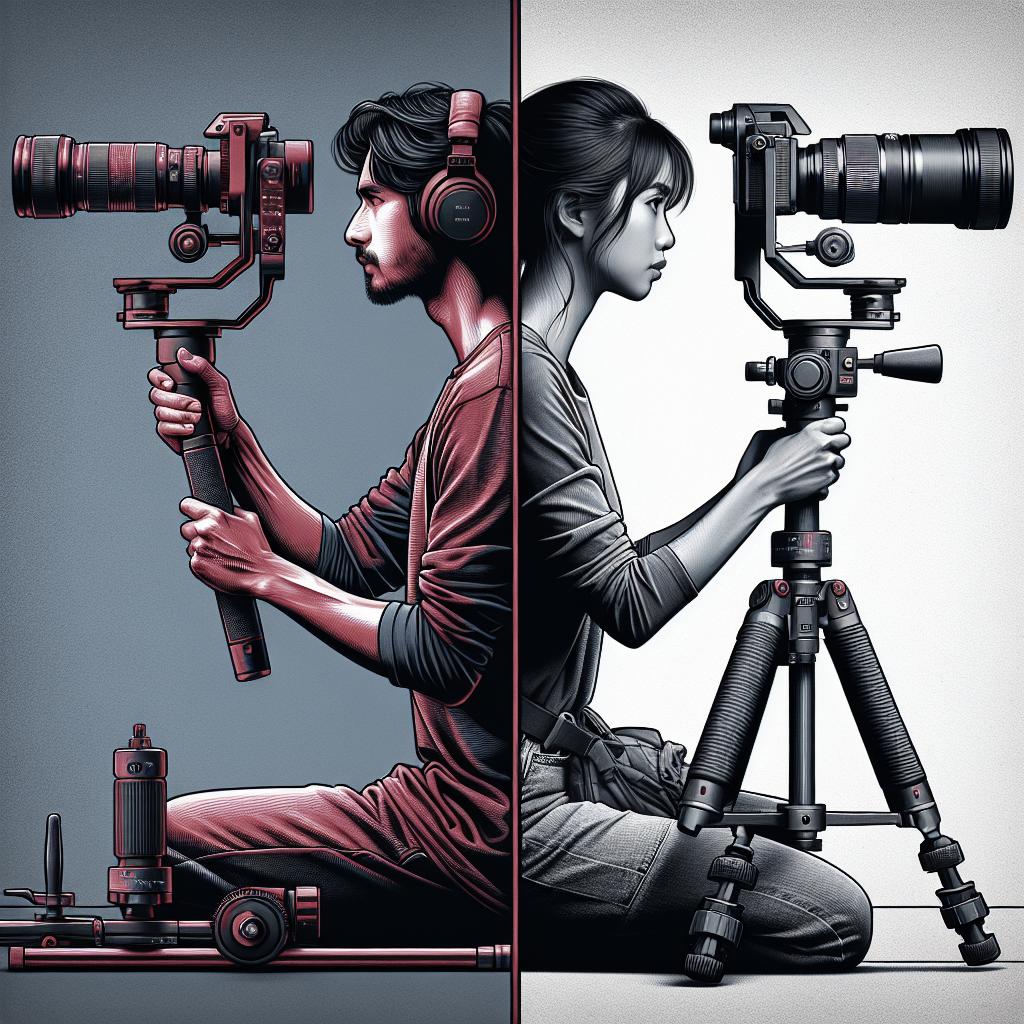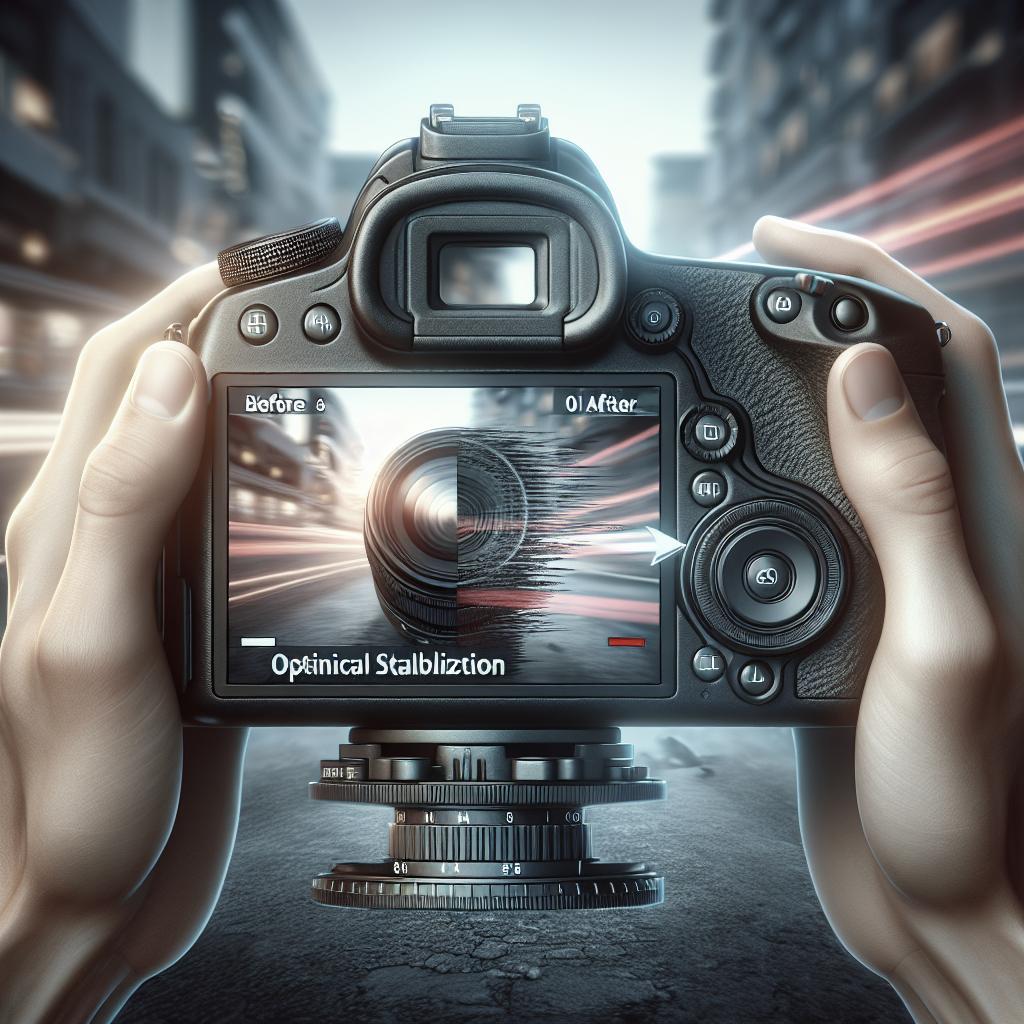“`html
Understanding Handheld vs. Mounted Stabilizers
In the world of videography, stabilization tools can make or break footage quality. Handheld and mounted stabilizers are pivotal in achieving smooth, cinematic shots. Each type has its own features, benefits, and challenges, catering to different shooting needs. This guide delves into the nuances of stabilizers, from handling techniques to the presence or absence of motors, and offers insight into innovations shaping the future of stabilization technology. By understanding the distinctions between these stabilizers, aspiring filmmakers can make informed choices suited to their creative needs.
One or two hands?
When choosing a stabilizer, one of the primary considerations is whether to use one or two hands for operation. This choice affects the control and versatility of the equipment. One-handed stabilizers, typically lighter and more compact, are designed for mobility and quick adjustments on the go. These are perfect for solo shooters who prioritize portability.
In contrast, two-handed stabilizers offer enhanced control and stability, making them ideal for more complex shots, especially when tracking moving subjects. The additional grip allows operators to distribute the weight more evenly across both hands, reducing fatigue and providing greater precision in handling. This choice often depends on the specific needs of the project and the shooting conditions anticipated.
One-handed options
One-handed stabilizers are favored for their compact design and ease of use. They are particularly effective for vlogging and travel videography, where convenience and speed are paramount. These stabilizers often feature intuitive controls and are compatible with a range of cameras, including smartphones and lightweight mirrorless cameras.
The market offers several one-handed stabilizers that incorporate smart technology, such as follow modes and automatic balancing, which help users achieve professional-quality footage with minimal effort. These devices are also more affordable, making them accessible to beginners and hobbyists looking to enhance their video capabilities without investing heavily.
Two-handed options
For those seeking greater control, two-handed stabilizers are the preferred choice. They cater to professional videographers who demand high-quality footage and stable motion capture. With ergonomic designs, two-handed stabilizers reduce physical strain and provide more versatility in controlling the camera’s movement.
These stabilizers are often equipped with advanced features, such as fine-tuning capabilities for individual motor strength and customizable settings for different shooting scenarios. The added stability allows for more intricate movements, such as panning and tilting, ensuring that the footage remains smooth and free of unwanted vibrations.
Stabilizing the action
At the heart of any stabilizer is its ability to stabilize action. Handheld options use a variety of mechanisms, including counterweights and balance adjustments, to ensure smooth footage. These devices accommodate dynamic shooting styles and fast-paced environments, such as sporting events or action-packed scenes.
Mounted stabilizers, on the other hand, often integrate additional components like harnesses or vests to further distribute the weight. They are specifically designed for extensive videography sessions, ensuring the operator can capture hours of footage without compromising on comfort or quality.
You don’t always need a motor
While many modern stabilizers come equipped with motors for automated stabilization, not all situations require them. Manual stabilizers, which rely on physical weights and mechanical systems, can be just as effective in certain contexts. They offer reliability without the concern of battery life and are less prone to malfunctions.
Moreover, motor-less stabilizers are incredibly silent, making them suitable for environments where noise must be minimized. They allow operators to develop a deeper connection with the equipment through manual adjustments, aiding those who prefer a hands-on approach to their filming style.
Final thoughts
Choosing between handheld and mounted stabilizers rests on understanding the specific demands of your creative projects. Whether you prioritize mobility or control, each type of stabilizer has distinct advantages tailored to different filming environments. As technology continues evolving, new features and innovations are constantly introduced, providing filmmakers with varied options to suit their artistic vision and logistical constraints.
Sidebar: What are axes?
In the realm of camera stabilization, “axes” refer to the paths of motion that a stabilizer can control. Typically, stabilizers manage three axes: pan, tilt, and roll. Each axis corresponds to a different movement: panning controls side-to-side motion, tilting adjusts the up-and-down angle, and rolling deals with the rotation of the camera.
Understanding axes is crucial when selecting a stabilizer, as the number of axes a stabilizer can control directly impacts its versatility and the complexity of shots it can capture. Modern stabilizers often offer controls over all three axes, providing comprehensive stability to accommodate a wide range of cinematographic techniques.
Manufacturer list
Sony discontinues the Airpeak S1 drone
Sony recently announced the discontinuation of its Airpeak S1 drone, a decision driven by limited market demand and strategic prioritization of other product lines. This shift allows Sony to focus on its core strengths in imaging and sensor technology, which are integral to its future product offerings.
Best products of 2024
The year 2024 has seen numerous innovations in the field of stabilizers, with top products featuring advanced motorized gimbals and AI-enhanced tracking technologies. Brands like DJI, Zhiyun, and Moza have released models that offer exceptional performance and user-friendly interfaces, setting new benchmarks for handheld and mounted stabilizers.
Skydio faces battery shortage after Chinese sanctions
In recent news, Skydio has experienced a battery shortage due to sanctions on Chinese imports. This has impacted the production and delivery timelines of their popular drones, leading to delays for consumers. The company is actively seeking alternative suppliers to mitigate the effects of these sanctions and continue to support its growing user base.
Next steps
| Aspect | Handheld Stabilizers | Mounted Stabilizers |
|---|---|---|
| Handling | One-handed or two-handed; designed for portability and ease of use | Two-handed; ergonomically designed for extended use with added control |
| Technology | Often includes automated balancing and smart features | Includes fine-tuning capabilities and advanced stability features |
| Mobility | Highly portable, ideal for vlogging and travel | Best for complex shots and professional filming |
| Stabilization | Uses counterweights and balance adjustments without needing motors | Integrated with harnesses or vests for weight distribution |
“`


